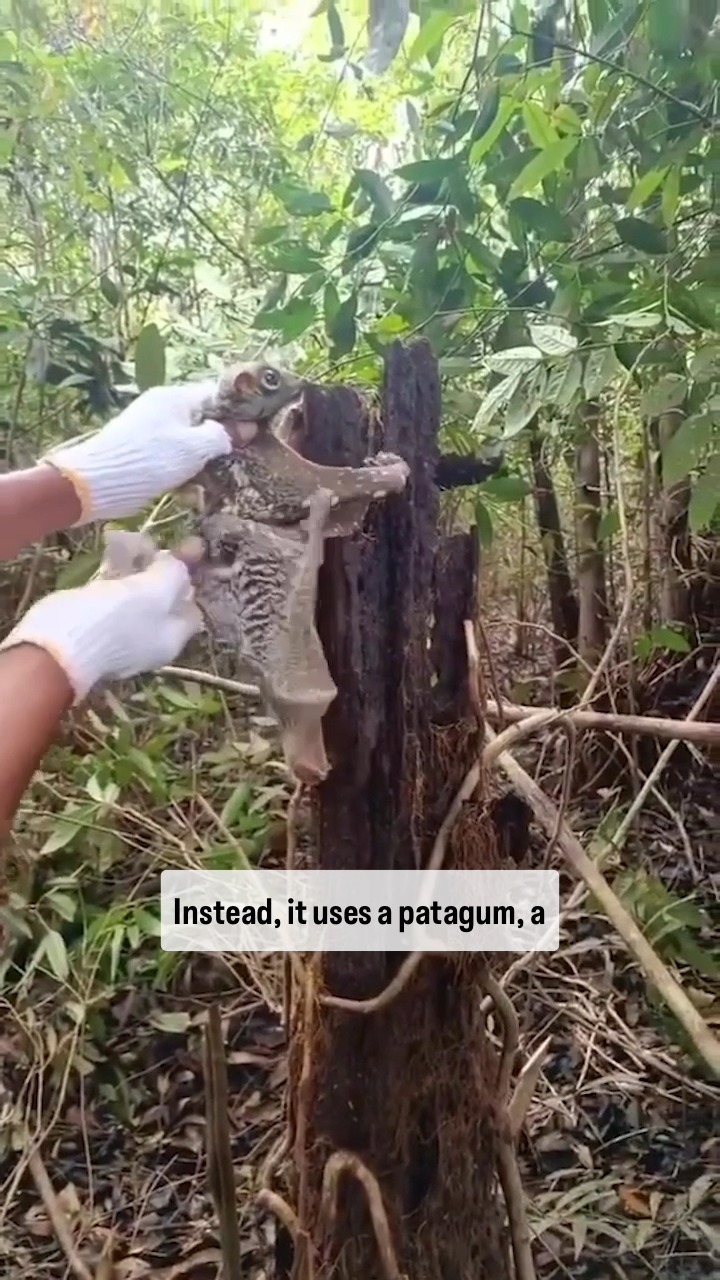- Colugo: Definition and Misnomer
- Physical Characteristics and Gliding Mechanics
- Habitat and Behavior
- Conservation Status and Threats
- Fascinating Facts and Misunderstandings
Colugo, commonly known as the flying lemur, is neither a lemur nor capable of true flight. This unique creature hails from Southeast Asia and, despite its nickname, embodies a fascinating evolutionary adaptation that allows it to glide with remarkable efficiency. The term "flying lemur" is misleading; colugos belong to the order Dermoptera and are more closely related to primates than lemurs. Understanding their classification sheds light on their ecological role and the importance of conservation efforts aimed at protecting these species.
The colugo is distinguished by its extensive patagium, a membrane that stretches from its neck to its toes and tail, creating a gliding surface. This adaptation allows colugos to soar distances of up to 300 feet between trees in search of food and to evade predators. When they leap from a height, they can effortlessly glide through the air, utilizing their flaps of skin to maximize lift and control. Their long, slender bodies are equipped with a flexible structure that enables them to alter their trajectory with precision mid-air. As they glide silently through the forest canopy, they resemble an aerial acrobat, showcasing nature’s ingenuity in animal adaptation.
Colugos predominantly inhabit tropical rainforests, primarily across Southeast Asia, including countries like Malaysia, Thailand, and Indonesia. These mammals are strictly nocturnal, which means they are most active during the night. Their primary diet consists of leaves, fruits, and flowers, showcasing their herbivorous nature. The colugo’s diet is rich in cellulose, necessitating a specialized digestive system to break down tough plant materials. Their nocturnal habits provide them with protection against various predators, including birds of prey and larger mammals.
Despite their intriguing adaptations, colugos face several threats that jeopardize their survival. Deforestation is one of the most significant dangers they encounter. As human populations grow and expand, their habitats are increasingly fragmented and destroyed. Poaching and the illegal pet trade also endanger their populations. Conservation organizations are actively working to raise awareness about colugo’s plight and implement strategies to create protected areas in their native habitats.
Colugos exhibit a wealth of fascinating attributes that highlight their unique evolutionary journey. For instance, they possess a flattened skull and large eyes, which provide excellent night vision. Their limbs and claws are also specially adapted for climbing and gripping tree trunks. Additionally, colugos can turn their heads nearly 180 degrees, aiding them in scanning their environment for food and potential threats. These characteristics make colugos one of the most efficient gliders in the animal kingdom, often overshadowed by more charismatic species.
Unfortunately, much misinformation surrounds colugos, particularly regarding their classification and abilities. Many people wrongfully categorize them as lemurs due to their namesake, ignoring their significant differences. Clarifying these misunderstandings is crucial in fostering greater appreciation for colugos and the crucial role they play in their ecosystems.
In their natural habitat, colugos contribute to the health of their environment by helping disperse seeds and promoting plant growth. Their diet helps control the vegetation in tropical areas, ensuring a balanced ecosystem. The sustainability of their rainforest homes is vital not only for the colugo but also for countless other species that depend on these rich environments. Efforts to protect colugos will enhance biodiversity and maintain ecological balance.
Encouraging local communities and governments in Southeast Asia to recognize the value of preserving colugo habitats is essential. Community engagement in conservation initiatives can provide alternative livelihoods and promote awareness of the importance of these unique mammals. Education about colugos can stimulate interest and inspire action, vital for ensuring their survival amid escalating environmental challenges.
Scientists continue to study colugos to understand better their biology, behavior, and role in the ecosystem. Ongoing research aims to uncover the specifics of their glide mechanics, reproduction, and interactions with other forest inhabitants. This knowledge not only enhances our understanding of this remarkable species but can also inform conservation strategies and foster deeper ecological awareness.
The colugo is a testament to nature’s creativity and adaptability. As one of the most fascinating gliders, colugos exemplify the intersection of evolution, ecology, and conservation. By recognizing their unique traits and the threats they face, we can foster a deeper appreciation for these incredible mammals and promote efforts to protect the rich biodiversity of Southeast Asian forests.
Follow @animals_az for more wild facts, stealthy flyers, and the often-overlooked champions of the animal kingdom. Through wildlife education and conservation, we can work collectively to ensure that these underrated gliders continue to soar through the trees above.
*****
Source Description
You’ve heard of flying squirrels.
But what if I told you there’s a creature that glides farther, looks weirder, and was wildly misnamed?
Introducing the colugo—also called a flying lemur… even though it’s neither a lemur nor capable of actual flight.
But what it can do?
Glide up to 300 feet using a built-in skin suit that stretches from neck to toe to tail.
It’s like nature gave a tree-dwelling introvert a parachute and said: “good luck out there.”
Colugos use this massive flap of skin (called a patagium) to soar through forests at night, avoiding predators and defying gravity with the grace of a furry ninja kite.
They’re silent, strange, and possibly the most underrated gliders on Earth.
Follow @animals_az for more wild facts, stealth flyers, and misunderstood MVPs of the animal kingdom.
.
.
.
.
.
[colugo, flying lemur, gliding mammals, patagium, nocturnal forest animals, weird animals that glide, mammals that fly, animal gliding adaptations, forest canopy animals, underrated animal species, wildlife education content, animal behavior facts, Southeast Asian wildlife, gravity-defying animals, funny animal facts, animal encyclopedia content, animal flight adaptations, animals that don’t actually fly] Sources: Kak Wahyu, wei_luv_nature, jaykeswildlife


